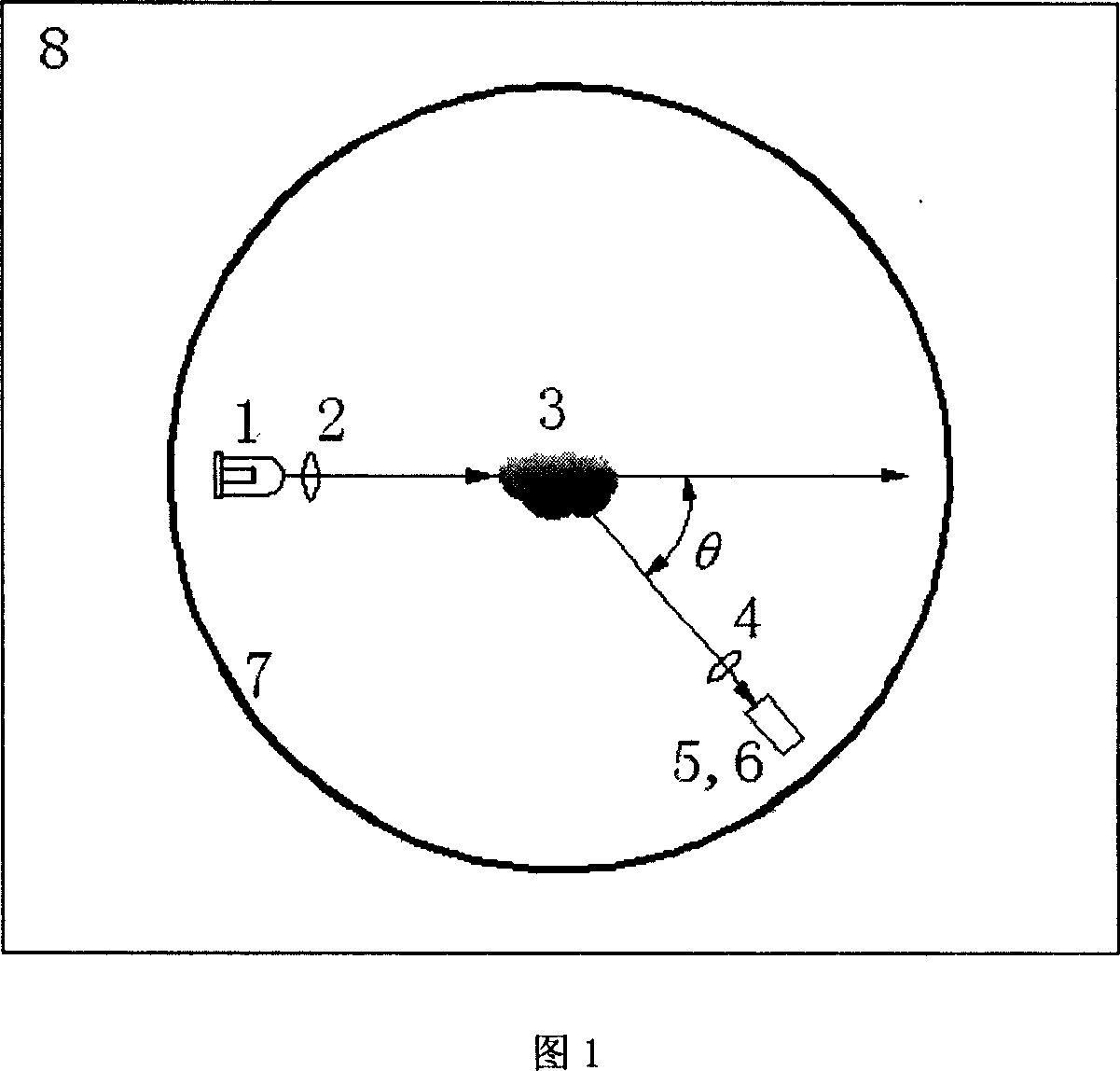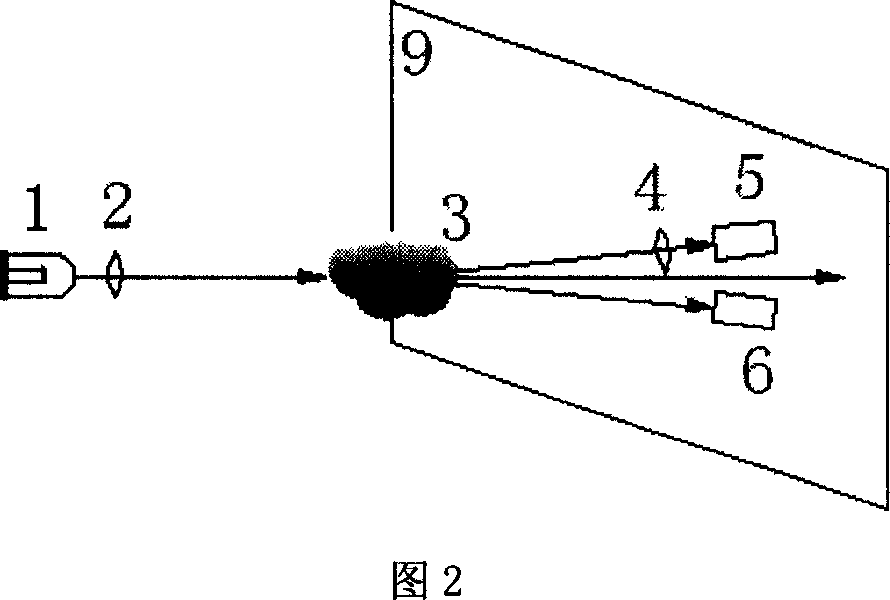Photoelectric smoke sensing fire detecting method and apparatus based on depolarization rate
A fire detection and photoelectric smoke technology, which is applied to fire alarms, fire alarms, instruments, etc. that rely on smoke/gas interaction, can solve the problems of poor consistency of response sensitivity, limited sensitivity, and inability to fundamentally eliminate false alarms, etc. , to achieve the effect of reducing the false positive rate
- Summary
- Abstract
- Description
- Claims
- Application Information
AI Technical Summary
Problems solved by technology
Method used
Image
Examples
Embodiment 1
[0013] FIG. 1 shows a schematic top view of a photoelectric smoke detection device based on depolarization ratio according to the present invention, and FIG. 2 is a schematic side view thereof. All optical and electronic components in the detection device of this embodiment are installed in a flat cylindrical detection chamber 7, which can not only block the external ambient light, but also allow smoke particles to enter smoothly, so that the inside of the chamber To form an optical anechoic chamber, for example, a group of "V"-shaped thin slices such as "dominos" can be used as the side wall of the detection chamber. As shown in Figure 1, inside the detection chamber 7 placed horizontally on the bottom surface, a light source 1 is installed close to the left inner side of the detection chamber 7, and the light beam emitted by the light source 1 along the horizontal direction is aimed at the circular bottom surface of the cylindrical detection chamber 7 In the center of the ci...
PUM
 Login to View More
Login to View More Abstract
Description
Claims
Application Information
 Login to View More
Login to View More - R&D
- Intellectual Property
- Life Sciences
- Materials
- Tech Scout
- Unparalleled Data Quality
- Higher Quality Content
- 60% Fewer Hallucinations
Browse by: Latest US Patents, China's latest patents, Technical Efficacy Thesaurus, Application Domain, Technology Topic, Popular Technical Reports.
© 2025 PatSnap. All rights reserved.Legal|Privacy policy|Modern Slavery Act Transparency Statement|Sitemap|About US| Contact US: help@patsnap.com


